#Nor any of the writers
Text
So my mom decided she wanted to watch the W3dn3$day show, and since I'm spending the holidays with her, I watched with her.
Feels good to know my opinion on it was right before - it was a tremendous disappointment. A M0rt1c1a that is critical of her children and would rather not dirt her nails instead of digging a corpse with her daughter; a W3dn3$day that... Kiss boys? And hesitates before doing shit she thinks is right? And misses so many fucking obvious clues? My mom knew who the bad guy was on the second episode. That's pathetic.
The funniest thing is that the two characters that ended up being the most interesting were the ones initially presented as the most boring stereotype teenage girls - and they didn't even explore it that well. Girlish girl and queen beetch, you guys deserved better :/
#oh yes let's put the symbol of social outcast teenager in a school that is all about social outcasts and make it a fantasy story#about killing a big ugly literal monster controled by a woman so pathetic it's despised by her own hero who is also a zombie#fucked up the spelling so it doesn't show on the show tag#so that I don't get dogpilled by 14 year olds lmao#anyways pathetic#2/10 would not watch again#but I would read character metas about girlish girl and queen beetch yes#I think the original author would be so disappointed#the Add@ms was always a critical story about social outcasts#this aint it#like????????#Never let T/im Burt/on get close to the Ad/dams Fa/mily again#Nor any of the writers#this is shit :/#mine
2 notes
·
View notes
Text
Hey I’m rewatching Warehouse 13 and it’s actually good??? I originally watched it when I was like 12, so I figured it would be one of those things where upon rewatching it I would realize it sucked but still get nostalgia from it, but that is not the case.
Sure the effects are lowkey shitty because it was 2009, but the writing?? Especially for the female characters?? They all have depth, internal conflict, unique character traits, individual strengths and weaknesses, it’s amazing!
I also love the world building. Half of it is based in real history and half of it is fully made up but all of it is fun and engaging and I enjoy it immensely.
#warehouse 13#Watching this show and looking at how so many writers write female characters currently#makes the flat demeaning “feminist” “strong female characters” even more pathetic than I thought#like I just needed a palate cleanser or something to realize how bad it’s gotten yikes#there’s a reason this show has more f/f ship fics than any other category by like a thousand fics#even though the gender ratio of characters is fairly even#and it’s because they treat their female characters with respect and dignity#also myca/helena are amazing together but that’s neither here nor there
182 notes
·
View notes
Text
the pathologic Kin is largely fictionalized with a created language that takes from multiple sources to be its own, a cosmogony & spirituality that does not correlate to the faiths (mostly Tengrist & Buddhist) practiced by the peoples it takes inspirations from, has customs, mores and roles invented for the purposes of the game, and even just a style of dress that does not resemble any of these peoples', but it is fascinating looking into specifically to me the sigils and see where they come from... watch this:
P2 Layers glyphs take from the mongolian script:

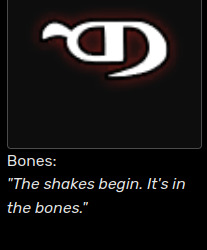

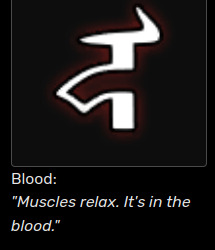

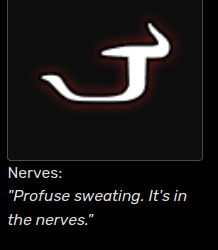


while the in-game words for Blood, Bones and Nerves are mongolian directly, it is interesting to note that their glyphs do not have a phonetic affiliation to the words (ex. the "Yas" layer of Bones having for glyph the equivalent of the letter F, the "Medrel" layer of Nerves having a glyph the equivalent of the letter È,...)
the leatherworks on the Kayura models', with their uses of angles and extending lines, remind me of the Phags Pa Script (used for Tibetan, Mongolian, Chineses, Uyghur language, and others)


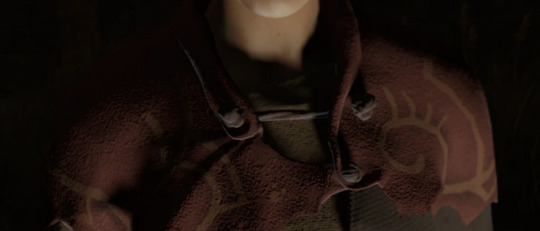
some of the sigils also look either in part or fully inspired by Phags Pa script letters...






some look closer to the mongolian or vagindra (buryat) script




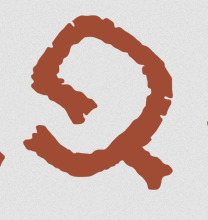
looking at the Herb Brides & their concept art, we can see bodypainting that looks like vertical buryat or mongolian script (oh hi (crossed out: Mark) Phags Pa script):
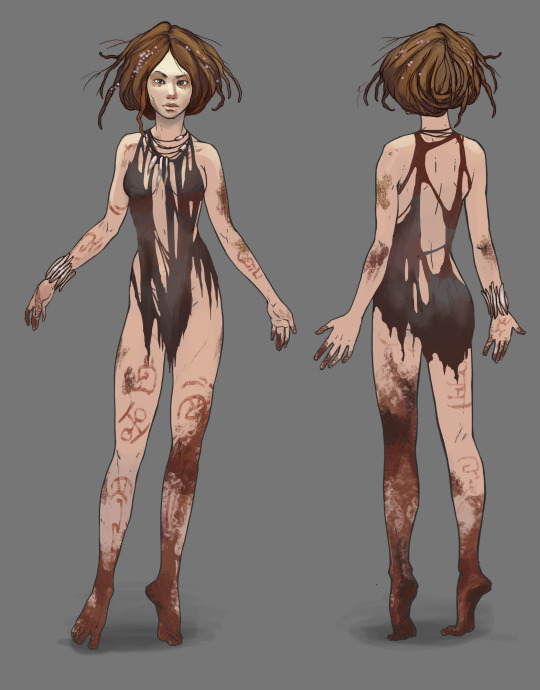
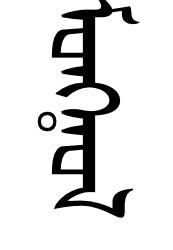
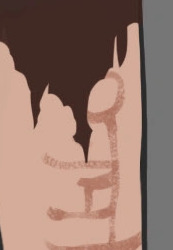
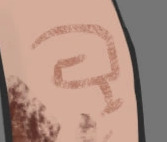

shaped and reshaped...
#not sure how much. what's the word. bond? involvement? not experience. closeness? anyone in the team has with any of these cultures#but i recall learning lead writer is indigenous in some way & heavily self-inserts as artemy [like. That's His Face used for#the p1 burakh portrait] so i imagine There Is some knowledge; if not first-hand at least in some other way#& i'm not in the team so i don't know how much Whatever is put into Anything#[ + i've ranted about the treatment of the brides Enough. enough i have]#so i don't have any ground to stand on wrt how i would feel about how these cultures are handled to make the Kin somewhat-hodgepodge.#there is recognizing it is Obviously inspired by real-life cultures [with the words;the alphabet;i look at Kayura i know what i see]#& recognizing it Also is. obviously and greatly imagined. not that weird for you know. a story.#like there is No Turkic/Altaic/Mongolic culture that has a caste of all-women spiritual dancers who place a great importance on nudity#as a reflection of the perfect world and do nothing but dance to bring about the harvest. ykwim...#like neither the Mongols nor the Buryats nor the Tibetans dress the way the Kin does. that's cos the Kin is invented. but they're invented.#.. on wide fundations. ykwim......#Tengrism has a Sky Deity (Tengri) with an earth-goddess *daughter* whereas the kin worship an Earth-Goddess mother of everything#+ a huge bull. Buddhism has its own complete cosmogony & beliefs which from the little I know Vastly Differ from anything the Kin believes#like. yeah. story. but also. [holds myself back from renting about the Brides again] shhh...#neigh (blabbers)#pathologic#pathologic 2
295 notes
·
View notes
Text


Kyndra & Nia
The Alderking’s lovers
#did I do moodboards for them already? I don’t know nor do I care#don’t worry he didn’t cheat on any of the two with the other they were dating each other also#writer speaks#writeblr#wip: the knights of the alder#my moodboards
52 notes
·
View notes
Text
What does it mean that Homelander is the only supe that has Compound V incorporated into his DNA? And that he can pass it down to progeny?
A short essay no one asked for (but inspired by @saintmathieublanc ‘s poll about whether HL and Ryan can be depowered)
Reading 1: literal
His DNA consists of Compound V. Which means that Compound V is a nucleotide analogue, a proteinaceous component of histones around which DNA wraps and gets packed into a chromosome, or some kind of non-organic chemical that binds to DNA (DNA intercalators). I actually kind of like the idea that Compound V is a part of histones, because you could handwavely imagine it gets incorporated haphazardly and affects the expression of random genes, turning them on or off, hence its varied effects.
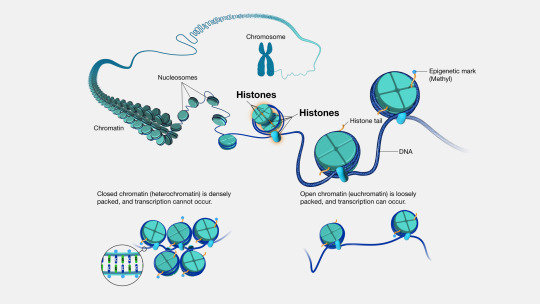
Reason 1 none of these seem likely: DNA replicates constantly, not only during embryonic development but throughout your life. Having DNA be modified but not requiring a constant influx of new Compound V means that the DNA would eventually dilute out to become normal.
Reason 2 these aren’t likely: a proteinaceous histone component injected into infants wouldn’t really exert any effects. Wouldn’t even go into cells. A nucleotide analog or a DNA intercalator chemical could go into cells and effectively act as a DNA damaging agent (this is how some chemo works, in fact). Hard to imagine how randomly damaging DNA would result in gaining of abilities, but I guess formally possible if the damage is somehow directed. The randomness of powers gained could potentially be compatible with “random damage”. But what would then be the difference between Homelander and other supes? The Compound V would then be “part of the DNA” in both cases
Reading 2: which I favor
Compound V is a hormone. Hormones are something one could inject into a baby to exert profound effects, even if only done once. What’s not clear of course is why the hormone exerts such different effects in different babies. One handwavy model is that, unlike testosterone or estrogen or melatonin or adrenaline, with defined programs being triggered, Compound V is a hormone that creates artificial stresses in the body that tissue will respond to adaptively, and that this process is stochastic/random. This would be consistent with Compound V being better as something taken as a child- more tissue plasticity.
What does it mean that Homelander’s DNA “contains Compound V” in this schema? Hormones aren’t part of DNA. But they could have engineered a gene that encodes an enzyme (or a set of genes encoding a set of enzymes) that generate Compound V out of a common steroid precursor like cholesterol. They may also have encoded whatever receptor in the human body binds Compound V to be expressed more highly or in specific tissue in the body, but this is less crucial. This would even be somewhat realistic for 1981 era biotech. In this scenario, Homelander has been exposed to Compound V throughout embryonic development (earlier than everyone else), and has the ability to make more all the time. This would be consistent with it being heritable: Ryan didn’t need any exogenous Compound V, he had the genes to generate it himself.
If Soldier Boy’s radiation undoes the effects of Compound V out of people who have had one exposure, this would mean his radiation would be less effective on Homelander and Ryan: they would eventually generate more Compound V and with time presumably regain their powers. And that’s my final answer to @saintmathieublanc ‘s poll 🧐
#compound V logistics#no one:#literally no one:#me: writes essay about stuff neither the Boys writers nor Garth Ennis devoted any thought to#homelander#homelander meta#biology#the boys#the boys tv#mystuff
128 notes
·
View notes
Text
Love the enthusiasm people have for trying to get Lockwood & Co. picked up elsewhere, but you absolutely should not treat the WGA strikes like they're a popular trending news item that you can jump onto to get more attention for L&Co. This is a labor dispute aimed at ensuring crucial protections for people's livelihoods and the sustainability of screenwriting (and F/TV more broadly) as a career. This is human beings' lives and work conditions. It is not about you or your favorite show--please do not try to make it about that.
#if you want to donate to the ecf you absolutely should but you should not be doing it to try to get the guild to talk about the show????#that's not remotely appropriate#nor is it how any of this works#nor is it even relevant here because the writers involved aren't part of the guild#this is not what solidarity looks like#lockwood and co#lockwood & co#pearlcaddy.txt
156 notes
·
View notes
Text
A Timeline of Events in the Artemis Fowl Series

If anyone's interested, I did do an actual analysis for where I pulled some of these dates from. But because I cannot type succinctly to save my life, it's 5,000 words long, so that's below the cut. I also put the timeline there again, but in three separate images, so hopefully they load well enough to be fully legible if the above isn't.
A thousand thanks to @sadbitchapologist and @zahnie for their help and advice with this, despite neither of them having any more than the barest interest in the series and therefore having no clue what I was on about. Thanks also to @orangerosebush for fielding completely out-of-the-blue questions about the French school system, so I didn't have to attempt to navigate web search results to figure out what mandatory gym classes were like for the sole purpose of plotting Luc's birthday on here.
An Analysis of the Timelines in the Artemis Fowl Series
A Brief Introduction
The Artemis Fowl series is made up of eight books covering a range of years and events. I wanted to see how accurate the timelines present in the books were, as well as try and plot out some other details implied in the novels but not explicitly stated, to have a better understanding of the overall world-building. To that end, I went through the series and made the above timeline. I colour-coded it based on the relevance of the specific items to certain categories, namely Humans, Fairies, Villains, and the Series itself. This does mean that some things could have fit into multiple categories. For instance, you will see some items involving Opal categorized as Fairy-Specific (such as her college years, as those are fairly neutral to the main plot or her villainy), Villain-Specific (such as her setting up her emergency fund, as that is mostly related to her schemes as opposed to relevant to her existence as a fairy, or part of the main plot of the series), and Plot-Specific (such as her opening the Berserker Gate, the primary plot point for the final book).
Before we really delve into things though, we should establish the baseline assumptions I was working with. Firstly, I am only using the original series. I have not used anything written in The Fowl Twins trilogy, given that those books seem to ret-con a considerable amount of the original information, and that is far too many headaches to give myself. Any supplemental series information, such as the short stories found in The Artemis Fowl Files, or anything from interviews is also not included. The premise here is: using just the original books, what is the event timeline of the world? The second thing we need to establish is that I am using the North American releases of the novels. I did make notes on where each bit of information comes from, but there isn’t really a citation style for this kind of thing, so I’m not sure how relevant that is. The third assumption is that the first book takes place the year it was originally published. According to my copy, the original publication was 2001, with the first American paperback edition coming out in 2002, and the first mass market paperback being released in 2003. This means our starting point is in 2001.
For sake of clarity, this analysis will start with setting the dates of the books and continue on from there.
The Basics of The Books
With that out of the way, let’s talk about the first book, Artemis Fowl (AF). It is actually not until the very end of the book that we get a solid answer for when it takes place. It’s only in the last few pages of the novel that Angeline Fowl leaves her attic room after all the plot points are tied up and announces that it is Christmas Day. This might be cause for concern – Angeline had not previously been established as a particularly reliable narrator – but given that we are asked to believe that Holly’s ‘feel better’ mood booster worked, and that neither Butler nor Artemis balk at or question the pronouncement that is Christmas Day, we’ll accept that it’s true and move on. This means that, with Butler’s earlier announcement that he was stuck doing four months of stakeout, we can say with a fair amount of certainty that Artemis obtained and translated the Fairy Book in September 2001, and managed to capture a fairy in December of the same year.
Moving on to Artemis Fowl: The Arctic Incident (TAI), we are given a decent chunk of information, albeit spread out a bit. The first is the announcement that the ransom drop for Artemis Fowl I is to be held on the fourteenth. The fourteenth of what, you might ask? Well, we are told that Artemis is currently thirteen years old. Clearly, things are past September 1, 2002 (we know Artemis’s birthday is September 1 based on information in both the fifth and seventh books). We are also told that Luc Carrere has been trading with the goblins for six months, starting in July. That puts us in either December or January, but we can narrow it down further since Artemis gives us another helpful clue. He mentions they are not expecting to see the dawn while attempting to rescue his father in the Arctic. There are only a few latitudes on Earth where polar night (of any type) occurs, and at Murmansk, polar twilight occurs between December 10 – January 2. Combining all of this, we learn that TAI takes place December 14, 2002, give or take a few days to either side.
This can be corroborated by information in Book 3, Artemis Fowl: The Eternity Code (TEC). After Holly heals Artemis Senior, we are told that it takes over two months for him to wake up. Since we are specifically told two months, as opposed to two and a half or three, we can conclude that the events of TEC take place in March 2003. Mulch gives us some information that confirms this. He was living in LA “less than four months ago,” and since he was conscripted to help with the events of TAI in December, a March plotline fits the bill. We are given further confirmation as well: Spiro mentions that Artemis will be fourteen in six months. A specific date for Artemis & Co.’s attack on Spiro’s Needle can be pulled from the throw-away line that Pex and Chips are “burying” Mulch on the full moon. A quick web search tells us that the full moon in March of 2003 takes place on March 14, and the rest of the events in the novel take place roughly two days to either side of that.
In Artemis Fowl: The Opal Deception (TOD), the fourth book in the series, we are given several very clear indications of when the events take place. Firstly, Artemis is contemplating that at fourteen years and three months old, he is the youngest person to successfully obtain The Fairy Thief. Based on previously noted details that his birthday is in September, the events of TOD must take place in December of 2003. Additionally, we are told that things are the middle of winter and Opal has been in a coma for eleven months and counting as of the end of TAI, another December plot.
Artemis Fowl: The Lost Colony (TLC) requires the most math and interpretation so far to figure out when it takes place. We know Artemis is still fourteen, so the main events clearly happen sometime between January 2004 and September 2004. Beyond that, we are using a fair amount of context clues. Artemis and Butler have evidently been traveling for four months looking for demons, so we are dealing with events in at least May. But that still leaves us several summertime months to work with, so to establish a timeline here, we will need to look forward a bit. In the sixth book, Artemis Fowl: The Time Paradox (TTP), it’s noted that Artemis is not yet fifteen, and has, on multiple occasions, spent the full moon in the study. Ergo, he’s spent at least a few months back from Hybras. If he has been back for two months and not yet turned fifteen, he would have had to have returned by July at the latest, and since he returns almost three years later than he leaves, we are looking at him returning in either May or June. This would have him disappearing to Hybras – and by extension, dealing with the earlier events in the book – in June, July, or August. After his conversation with Minerva, he notes to Butler that they “are planning a June wedding,” which wouldn’t make sense to say if they were currently in the month of June. From all of this, we can extrapolate that the first three-quarters of TLC take place in late July or early August 2004, with the triumphant return of our intrepid heroes occurring in June 2007.
As previously stated, TTP mentions that Artemis is still not fifteen, but is nearly there. He has also been home again for at least two months. This would put the events of the sixth book in August 2007. At least, the events set in the current time period. TTP does bring back time travel, and with it some problems. We are told that Artemis and Holly jump back nearly eight years to Artemis being ten and trying to fund searches for his missing father. This would put the events of the past in early 2000. However, other details presented regarding Artemis Senior’s disappearance, which we will discuss later, make that impossible. Artemis also admits, in TEC, that he was eleven when his father disappeared, not ten. If we take a bit of creative license with our interpretations and base the time-jump to the past on other presented information as opposed to the dates given in TTP, we can say that Holly and Artemis instead return to early 2001. This lines up with further details, such as the sinking of the Fowl Star (as calculated a few paragraphs down in this analysis) occurring in December of 2000, and the textual confirmation in TTP that it’s barely two months past that sinking when Artemis brokers the deal(s) regarding the silky sifaka lemur. Since, at the end of the day, the time jump impacts very little in the grand scheme of things, and the year 2001 actually fits in better with other textual evidence and events, that’s what I’m going with for this timeline.
The seventh book, Artemis Fowl: The Atlantis Complex (TAC) gives us a very helpful base point! It takes place on Artemis’s fifteenth birthday, September 1. From our previous results on setting dates for book events, that would be September 1, 2007. The sections in which Butler and Juliet are fighting mesmerized wrestling fans and meeting up with Mulch are noted in the novel as happening “the day before,” which would fall on August 31, 2007.
Artemis Fowl: The Last Guardian (TLG), the eighth and final book in the series, creates some problems. If we assume that Artemis starts receiving treatment for his Atlantis Complex immediately after diagnosis in TAC¸ that would put him receiving treatment in September 2007. We are told he is certified as cured after six months. Yet we are also told that the rest of the events of the book take place in the week or so leading up to the Christmas holidays. Everything so far has said that the Artemis Fowl series follows the current calendar, in which case there is no way that six months can fit between September 1, 2007 and December 25, 2007. However, the only reference to Christmas is in two lines noting that the Fowl parents were planning on holidaying with their children on a foreign beach. If we simply say that six months have passed, and they are instead planning on spending the Irish school system’s spring holidays in the French Riviera, everything else lines up much better. So that’s what I’ve done. This would also put the resurrection of Artemis, after the events of the book and a further six months have passed, at roughly September of 2008. There is a pleasing symmetry to Artemis being born and then re-born in September, though if you want to get really technical and say the events of TLG take place during the 2008 March full moon as Opal claims (as noted in another web search as March 28), a six-month wait time for the clone to grow would put the resurrection in October. Still, there is something to be said for having a boy’s ghost haunting a clone of himself close to All Hallows. Since it’s the last plot point of the series, you can choose which you’d like; it doesn’t have to lead to anything else after it.
Let’s Talk Timelines: The Beginning of the Line to The End of The 19th Century
Now that we have our baseline book time periods established, we can get into the math used to determine some of the events in the timeline above. Several events are easy; we are given specific dates for them. Turnball Root meets Leonor in 1938, Juliet wins the Miss Sugar Beet Fair beauty contest in 1999. Other things are based on some basic math, such as Artemis claiming his parents got married fourteen years prior to AF¸ putting that event in 1987.
The majority of the items on the above timeline, however, do take some mathematics, extrapolation, and interpretation to plot out. To try and keep everything organized, we’ll start at the far left of the timeline, and work our way forwards, looking at events oldest-to-newest to explain why they are where they are on the graph. I won’t be getting too in-depth on everything in the graph, since I’m not sure how relevant the notes on the very minor side characters such as Carla Frazetti are, but I’ll at least try to touch on some of the more relevant points.
To start with, the Battle of Taillte was noted in the 2000’s as being ten thousand years ago, putting that at 8000 BCE. Similarly, the last dome breach at Atlantis was apparently eight thousand years ago in the 2000’s, so that would be 6000 BCE. Troll sideshows were legal in the early middle ages, which implies they were not legal after that. A quick web search says the early middle ages ended around 1000. The first crusades were in 1096-1099, and as those crusades are the start point of the Butler-Fowl working relationship, a point for noting that comes next on the graph.
From there, we get into more modern – relatively speaking – events. Briar Cudgeon and Julius Root are noted as attending the LEP Academy together and being raised in the same tunnel, as well as having about 600 years of history together. If one assumes “being raised in the same tunnel” is similar to the human equivalent of “growing up in the same neighbourhood,” we can assume the two were born roughly 600 years ago, in the 1400’s. Vinyaya is portrayed as being of a similar age to Root, so her birth can also be put in the same general era. We are also told that Fowl Manor was originally a castle built in the fifteenth century, that in the early 2000’s the theories of timeline corruption were first introduced over five centuries ago, and that cloning has been banned for over five hundred years, so those three events are also tossed into the 1400’s.
Julius Root is noted as doing his LEP basic training 500 years ago in Ireland, so that would have to be in the 1500’s. He would have attended the Academy before then, putting that in the mid-to-late 1400’s. As previously stated, he was in the Academy with Cudgeon. Opal also met Cudgeon in college, and competed with Foaly for science prizes there, so they were all in school at the same time.
Mulch now enters the picture. We aren’t ever given a specific age range for him, but we are told about his career. He has, apparently, spent three centuries in and out of prison after a couple centuries of success as a thief. This would make him at least five hundred years old. There is a brief mention that he tried the athletic route at college before becoming a thief, so he would have to be an adult at that point, putting his age at roughly 550 years during the events of the series.
We then enter a period filled in from one-off lines throughout the series, presumably added to give some depth to the world. Things about the wine cellar at Fowl Manor being a seventeenth century addition, Captain Eusebius Fowl and his crew dying in the eighteenth century, and Mulch first faking his own death over two hundred years ago.
Time Marches On: The 20th Century
There is nothing of much relevance to linger on between the 1550’s and the 20th century, so we’ll jump ahead to the 1900’s, when we have Holly Short’s birthday. She is in her eighties during TLC, and her father died “over twenty years ago” when she was “barely sixty” as of TAI. Based on that, she would have been in her early eighties in 2002, putting her birthday sometime in the 1920’s. What a doll.
A few more birthdays now appear, and we’ll ignore, for the most part, some of the irrelevant ones. I don’t think we are at all concerned with Gaspard Paradizo’s birthday, or Mikhael Vassikin. We are, however, rather more interested in Jon Spiro, Domovoi Butler, and Artemis Fowl I.
Jon Spiro enters the series in TEC, as a middle-aged American. A quick search on the Internet says that middle age is generally noted as being between the ages of 40 to 60. We are told that Spiro has worked in three main industries over the past two and a half decades. Additionally, we are told that law enforcement has been “trying to put [him] away for thirty years.” If we assume he entered the working world at twenty, spent five years developing his professional self, and then started going down a path of questionable legality to get the police after him, that would put him at fifty-five in 2003, and born in the late 1940’s.
It was a bit easier to determine Domovoi Butler’s age, and we can get more specific with his actual birthday. We are told that he is forty at the start of TEC, and he is still forty during TOD. From that, we can assume his birthday is not between March – December, which means it has to be between January – March. Now, we can just leave things there, but contextually, Butler says in late March 2003 that “a lot of people know [him] as a forty-year old man.” Since I doubt he’s the kind of person who introduces himself by announcing that his birthday was last week, we can assume that his birthday is not in March. Since about half the books in the series take place in December, and there is never any mention of Butler’s birthday coming up soon, we can likely assume it isn’t in January. We can therefore conclude Butler was born in February, 40 years before 2003, which puts his birth year in 1963.
We then have Artemis Fowl I. This one took the most extrapolation to determine. We know he has run an ethical empire for a few years as of 2007, which coincides with his return to his family after being kidnapped by the Mafia. He apparently ran a successful criminal empire for two decades before that, though, so in 2007 he has been working for at least 25 years. Based on the interactions he had with his own son, I’ve assumed he was also taught to take over the family business from a young age. If he started working at his age of majority at 18 (as possible in the 1980’s in Ireland, based on a web search), we can assume he was born in roughly the mid 60’s.
Billy Kong, born Jonah Lee, is one to touch on. He plays a large role in TLC, during which we are given possibly the most backstory of any villain in the series. He was evidently born in the early 1970’s, and was eight years old in the early 1980’s. Mathematically, that can only lend itself to so many birth years, so it’s easy enough to put his birthdate somewhere in 1973, and his brother’s death date in 1981.
While we’re here, let’s talk about the 1980’s. A lot of things happen in the 80’s, so we’ll be here for a few paragraphs. Butler would have graduated Madam Ko’s Academy in the early ‘80s, Artemis I would have started working in his family’s business and stolen some warrior mummies (of note, the theft is only noted as being in Artemis Sr.’s “gangster days,” but if you are a young, rich criminal, you’d likely commit a wild theft in your early years as opposed to your thirties, which is why this is put in here). Additionally, in the mid 1980’s, Holly graduates the LEP Academy and her mother dies, as noted in TTP when she is contemplating missing three years of her friends lives.
Butler would have started his five-year stint in Russia with an espionage unit in the mid-to-late 80’s, and become a big brother in 1985. Juliet is noted at being four years older than Artemis in AF in 2001, and he is twelve then, making her sixteen at the time. We can extrapolate the month from TEC, wherein she is apparently eighteen when she is called regarding her brother’s apparent death. At the time, we are told what gifts she received for her birthday, implying it was fairly recent. Additionally, Artemis was only thirteen at that time, which would make Juliet five years older than Artemis. If, however, we trust that acolytes at Madam Ko’s start their training on their tenth birthday and get one chance to graduate per year, it would make sense for that one chance to be on their birthday, or within a day or two to allow for as much training time as possible. Since Juliet was in the midst of this one graduation evaluation when she gets the phone call and joins the crew for the March heist at Spiro’s Needle, she’d have to be born in March. (We can also corroborate this with some details from AF: if AF takes place in mid-September, that would be just after Artemis’s birthday, which puts the 4-year age difference back into play.)
Spelltropy begins for the People in 1987, if it appeared 20 years ago from 2007. Artemis I and Angeline Fowl would get married in 1987. They would have their first child, Artemis Fowl II, in 1989, as calculated by Artemis being twelve during the initial siege of the Manor in December 2001. Artemis II’s grandfather was noted as having been dead for over ten years at that point, and it was mentioned in TEC that Angeline married her husband before he really took over the family business, so those events would likely happen when Artemis was but a baby in 1990.
The ‘90s are a period where a lot of things are happening, but few are particularly important. Spelltropy has a cure found, Minerva Paradizo is born, Juliet begins her bodyguard training and her brother refuses to let her shave her hair. These, and other events in the 90’s, are mostly calculated by math along the lines of “Event A happened X number of years ago,” but since the 90’s was mostly a time of worldbuilding events rather than plot events, we’ll just skim over the specific details.
‘You Are Here’: The 21st Century, and Where The Storytelling Begins
Welcome to the 2000’s! The kick-off point of not only the 2000’s, but also the entire series, is the sinking of the Fowl Star. We aren’t given a specific date for this, but we are given enough information to extrapolate the date. Specifically, in September 2001, in AF, we are told Fowl Sr. has been missing for almost a year. In TAI, in December, we are told he has been missing for almost two years. That does have the potential to have the ship go down in either December or January, so we need to use a bit more details from TAI to make a final determination. Mikhael Vassikin and Kamar were told to dump Fowl’s body in the Kola if he didn’t wake up in “another year,” so they’ve been looking after him for one at that point. Fowl Sr. wakes up two weeks before the deadline, and as noted earlier, the ransom drop for him takes place December 14, after he has been awake for perhaps a week. From that, we can tell that the deadline for “another year” was mid to late December, putting the initial sinking of the Fowl Star in late 2000.
The analysis gets a bit confusing at this point, because 2001 is when future Artemis and Holly join the party via time travel, as well as having their regular selves in the timestream. Essentially, we’ve established the timeline for the events of TTP above, so we know the whole lemur fiasco takes place in March 2001. Artemis wakes up at the end of that book thinking about fairies, which ties in rather neatly to him then dragging Butler across three continents for six false alarms (with an assumed approximate 3 weeks between each jaunt) before striking metaphorical gold in Ho Chi Minh City in September. During their time-traveling, Holly also gets a chance to talk to Root, who wonders why she isn’t in Hamburg, which was noted in AF as Holly’s first major failure as a Recon officer and was nearly preceding the events of AF. The time-traveling would also mean that Opal would have had to harvest her DNA for future diabolical plans before March 2001, when her younger self travels to the future. Since it takes up to two years to grow a clone to adulthood, and her clone has to be ready in September 2003, we are a few months off in the time requirements, but really, for a practice that’s been outlawed for 500 years, I can offer a bit of leeway.
We are now well and truly in the thick of the main events of the series. Most of this will be tied into the initial assessments we made way at the beginning of this essay, where we established when each book occurs. Because of this, we aren’t going to spend time on anything plot-related. However, a brief note on Turnball Root and Artemis’s Atlantis Complex is likely in order. Artemis was, as previously stated, dealing with his return from Hybras and the after-effects of stealing magic during July and August of 2007. His Atlantis Complex, and Turnball Root’s plan to escape the Deeps prison, are in full swing in September of that year. We have a brief note in TAC during the evacuation of Atlantis, that Turnball had, a month before, spied on Artemis and noted his Atlantis Complex developing. Therefore, Artemis’s Complex likely came into play in late July or early August 2007. This is close enough to Artemis’s magic theft to make sense for the deterioration of his mental health, and enough time for Butler to have started to notice something was wrong, as he did. We can therefore assume that Atlantis Complex, at least in the case of magic-stealing humans who have a propensity for time travel and getting involved in supremely complicated and improbable plots, develops relatively quickly.
This leaves just one major discussion point from the last few books: the age of Artemis’s twin brothers, Beckett and Myles. The twins are first introduced at the very end of TLC. They are written as being two during the events of TTP, three during the events of TAC, and four during the events of TLG. Regardless of the time-traveling shenanigans of their elder brother, it is impossible for the twins to age two years in the eight months between Artemis’s return from Hybras in June 2007 and the finale of the series in March of 2008, so we need to look at what makes sense.
Myles has already potty-trained himself, and done so at fourteen months, so they must be at least that old. Their other behaviours would make sense for them to be two in TTP. Diapers are still a part of their lives, and their language and vocabulary fit what a two-year-old would have, at least in Beckett’s case. Since Artemis was surprised by their existence, it doesn’t seem likely that Angeline would have known she was pregnant, or at least not have told Artemis yet, when he went to Limbo. Ergo, they can’t be any older than two, since (one would hope) Artemis would have noticed his mother’s pregnancy if the twins were any older.
Additionally, in TLG, we know Artemis gave his brother a birthday present, so he had to have been around during the twin’s birthday at least once. With this fact, the twins cannot be born between March – June, which just leaves the question of when are the twins born?
The most logical answer is February 2005. If Angeline was early on in her pregnancy, say six weeks (which is when most women start noticing symptoms), when Artemis disappeared in July 2004, she wouldn’t necessarily have told him yet. Then, if we assume that since most twin births occur around the 35-week mark, that would math out to having the twins be born in February of 2005. Fast forward, and they would turn one in February 2006, and two in February 2007, which puts them at the correct age for the events of TTP. [One could argue, of course, that a twin pregnancy in an older woman (unfortunately, there is nothing in the series to indicate Angeline’s age) and in a woman already dealing with significant stress could result in a very premature birth, thereby voiding any of this math and leaving the whole question of the twin’s birthday unanswered. However, since I’d rather not subject the Fowl parents to the strife and misery of having one son missing and presumed dead, and their younger children in the NICU with a low survival rate, I’m working with the assumption that the pregnancy was a healthy and normal one.]
The brief comment from Juliet in TAC about the twins being three can be passed off by them being a little over two-and-a-half and Juliet not being around as she is touring in Mexico. By the time TLG takes place, in March of 2008, the twins would have had their third birthday, allowing for Artemis to give Myles his chair as a birthday present, Beckett to be old enough to no longer need diapers, and the behaviours to act more like children than infants. While this doesn’t quite allow for the repeated textual confirmations in TLG that the twins are four, we’ll go with what mathematically makes sense.
That brings us to the end of the timeline! Not everything is touched on in the timeline, and not everything in the books is plotted (we are never given enough context to know Foaly’s or Opal’s birthdates, for instance). But the main events of the Artemis Fowl series are all analyzed, mathematically or logically or textually corroborated, and plotted out, for use or ignoring as personal preference dictates.



#artemis fowl#af timeline#you have no idea how irritated I am that there is nothing - NOTHING - in the series to give ANY context#on the ages for Angeline Fowl or Arno Blunt or Damon Kronski.#i can make GUESSES but they would be entirely based on my own bias and thoughts and vibes#which is INTENSELY irritating because i have basically EVERYONE ELSE#on the timeline SOMEWHERE#oh well. i think i have most of the events of the series on there?#if i missed something i'd love it if someone could point it out so i have a complete 'map'#oh though to be clear: i did very much do this for me!#this isn't meant to like...take away anyone's headcanons or ideas or whatever#if you wanna do something that directly contradicts the above - go for it!#i am just - as my cousin put it - 'that kind of fic writer' in which i will do insane amounts of research for the smallest of details#the one i wanted this for is honestly in a fic i haven't even started#and that is in fact several ticks down the Want To Write list#but that's neither here nor there!#i now have an outline of when things happen so i can do whatever i want with it :)
230 notes
·
View notes
Text
half the people in the discourse over today's upd8 would not survive watching utena
#homestuck#homestuck 2#homestuck^2#homestuck beyond canon#hs#hsbc#hs2#hs^2#yes the incestuous undertones are there#no there's literally no sign that the intent is fetishistic#nor does it imply dirk and rose are no longer gay#see the thing about incestuous abuse is that it's about control not attraction#and given control is ult dirk's whole thing that's a far more likely angle than a joke or the writers being gross about it#and I've seen what 'incest-obsessed anti-incest' looks like and it's not the people Reacting rn#but to those Reacting have any of you ever seen utena
24 notes
·
View notes
Text
gonna be annoying in the tags
#i have never understood the character = actor thing#like genuinely i dont fucking get it at all#if anything i think it both discredits the actors effort and the people that actually created the medias efforts#actors very rarely have anything to do with the characters creation nor do they have anything to do with a character outside of portraying#them like tbh i feel like its a massive insult to the work that goes into acting and writing#plus i just dont really care for actors personally#but thats just a me thing#idk!!! charlie cox does not equal matt murdock he had nothing to do with creating matt murdock#or like cillian murphy as jonathan crane#i dont like jonathan crane because he looks like cillian murphy i just like jonathan crane#like yeah he did a great job with acting in the trilogy and portrayed him great#but cillian murphy doesnt have any of the traits i like in jonathan crane idgaf about that guy aside from like two roles hes done#i dont know man#i just feel like itd be shitty to put months or years into the creation of media#into method acting and portraying these characters with the help of writers and directors#just for characters to not be acknowledged as seperate from their actors#idk. like jonathan crane is played by cillian murphy they have the same face whatever#but that is in no way shape or form the same guy at ALLLLL#idk. also fucks with fandom portrayals of characters#i.e booktok white women projecting poorly written smut onto every middle aged man ever#like you dont look at animated media and equate that character to their VA why would you do it for live action shit#you dont look at writers work and equate their characters to themselves#uuugggggghhhhh#plus i think the film idustry in general tends to give actors too much credit for the creation of media#not to say actors do nothing because they definetly do im interested in acting myself#but brother they r not the ones that direct and write and edit and sound mix and all this other shit#skyler posting#soigh#anyways
13 notes
·
View notes
Note
Anne in Louis wrote all the qualities of herself she finds the hardest to accept which is mainly his passivity abd inability to engage with life and it's why he rarely appears in books in tne future but also why his ending is very lovely. Lestat has a lot of her hjsbands qualities but is also largely based on who she kinda wishes she was or naybe believe she could be if she was born a man there's a clip going around twitter where she talks abt this so i think fans know.
(x)
Totally! I'm not disagreeing with that at alll, but for me it's like - - mm, Anne was perpetually shocked when people related Claudia's death to her own daughter's death, right? And yet that is understood by both people who study and understand Anne on an academic and critical level, as well as fandom broadly, to be an absolute truth. It's certainly understood by Rolin in adapting the show, who's brought it up plenty.
Anne herself was impulsive, litigious, prone to getting swept up in movements, prone to bursts of anger and feuds with people who arguably should've been irrelevant to her professionally. Those traits are Lestat, not Louis, and it reminds me a bit of seeing Junot Diaz on a panel many years ago where he said you don't see yourself how you write yourself, and other people in your life don't see themselves how you write them.
That doesn't mean Rolin and the other writers aren't connecting dots. They have the benefit of being outsiders in the same way the rest of us are, and again, I think to give Anne's prose to Lestat is both a fascinating choice and a beautifully realised one because as a writer, I can say that I think she latched onto him as a POV character for a reason.
#idk i guess as a writer i don't think it's that simple#you don't see yourself in A Character and not in others#like not bragging but i have a novel out with a trad press i have more than 20 short stories published and two screenplays optioned#i've written a lot of characters!#and no one character is me but there are honestly parts of me in most of them#you live a full life you get to experience parts of yourself love parts of yourself GIVE parts of yourself in characters#assuming a 1-to-1 ratio in any writer-to-character is i honestly think a bit silly#no one person is any one thing#nor should they be#so why should all that they are filtering into any one fictional character they are creating be?#if anne had wanted to write a memoir she would have written one#amc interview with the vampire#welcome to my ama#iwtv asks
7 notes
·
View notes
Text
I love Spirk as much as the next person but some of yall act like they threw the first brick at Stonewall
#so many people seem to legitimately believe that like. Spirk was deliberately written and acted to be a romantic relationship#and that they pioneered queer representation#and like. sure Spirk was where slash fic was born#but its very important to remember that thats it#they were not deliberately written to be romantic#in the original source material they are not deliberately nor canonically together in a romantic sense#im saying this as somebody who ships it hard like im begging yall to remember that its a fandom thing and not a canon thing#you cannot be out here with takes like 'the Kelvin verse is homophobic because they made Kirk and Spock antagonistic at first'#that is fandom brain rotting like you are in too deep and you need to go outside#you cannot be getting mad that your ship that was never going to be canon isnt canon#thats not the fault of any writers or any directors they are not obligated to make any pairing canon no matter how popular it is#like sorry to anybody who thinks theyre actually going to make Spirk canon at any point but you are kidding yourself#and them not being canon isnt. a bad thing#since when did ships NEED to become canon#just have fun in your sandbox
10 notes
·
View notes
Text
"scorpion never apologized for what he did to kuai liang and bi-han" im going to start biting
#COMICS EVENTS DO NOT MATTER TO THE MKX GAME BC THEY CAME *AFTER*. HANZO DIDNT NEED TO APOLOGIZE FOR INJURING KUAI BC HE *DIDNT* BACK THEN#+ THERE HAS BEEN MULTIPLE TIMESKIPS WHERE HE COULDVE APOLOGIZED THAT THE WRITERS DIDNT CARED NOR WANTED TO SHOW US#+ HIS *FIRST* REACTION IN MKX TO GETTING TOLD HE WAS DUPED IS *AKNOWLEDGING* HE WRONGLY KILLED BI-HAN TO KUAI WHO ALREADY FORGAVE HIM-#AND SHIFTED THE BLAME FROM HIM TO QUAN CHI. FIRST THING HANZO DID WAS *REGRETTING* KILLING THE BROTHER OF THE MAN NEXT TO HIM AND SAYING SO#but he didnt say “sorry” out loud i guess. so what a douche amiright. never aknowledged of being wrong in any way whatsoever#can get away with anything bc hes the big favorite.#tagging later#I KNOW i sound like such a scorpion fanboy rn i know i know but also literally come the fuck on.#its been aknowledged ingame. if you want more blame the writers and the mk storytelling type. not the character.
24 notes
·
View notes
Text
the essential reason for which the challengers from beyond are the best jason team up is that the editorial did not try to make jason the leader. which he shouldn’t be
#it’s interesting because out of them 3 he def is in the centre of their story#but the writers did not attempt to lift him up by throwing the others under the bus#it seemed to be a very organic and natural development#and of course i’d prefer a story that would add much more substance to kyle’s and donna’a storylines too#but even without it it didn’t feel offensive to them?#the key is not trying to make jason seem to be the most competent and reasonable one#like. he always has personal and subjective agenda because he is UNWELL#which means that other characters should not relate to him much nor allow him to take the lead#and what i liked was also that jay was q self-conscious irt that#and his own limitations.#still very much competent!!#able to keep up without any issues#just not the absolute star or the show.#this is how team ups should work in general#but dc is too set on making jay into a power fantasy#which p much ruins all teams with him#and means that every character in his vicinity becomes a victim of it
26 notes
·
View notes
Text
Silver Lining scenes I found that probably won’t make it into Silver Lining but I still wanted to share
@bunnymermaidsblog I think you will enjoy this
*
“He doesn’t even look at me.”
Not once during the whole day Talon had looked him in the eyes. Not even when he gave him the engagement ring. It was like he refused to meet Aiden eye to eye.
Aiden had no idea what to think of this guy. He was a mystery to him. And that was the boy he was supposed to spend his whole life with?
Ranva put an arm around her son’s shoulder. “Oh my dear, he will. Trust me.” She ruffled his hair. “And then he’ll see what a wonderful person you are and how lucky he is to have you.”
Aiden wasn’t so sure about that.
*
Talon wanted to kiss him.
Surprised by that sudden thought of his he took a step back, much to Aiden’s dismay, who wanted Talon to kiss him just as bad as Talon wanted to do it.
“Alright then,” he said, trying to hide his disappointment. “See you tomorrow.”
Talon cleared his throat. “Yes, see you tomorrow. Good night, Aiden.”
Aiden mumbled a quick “good night to you too”, then he disappeared into his room, closing the door behind him.
Outside of his room, Talon still stood in front of the closed door, cursing himself for being such a coward.
*
“Let go of him.”, Talon demanded. “What’s going on here?”
The guard let go of Aiden’s arm immediately. “Sir, I caught him trying to sneak out and-”
“And what? He is no prisoner. He can go wherever he pleases whenever he pleases. There’s no reason for you to handle him like this.”
The guard looked confused. “But your father said-”
Talon narrowed his eyes. “What did he say?”
“He said to keep an eye on your fiancé. And that I’m supposed to stop him in case he tries to run away. I thought you knew about it, my lord.”
Aiden’s eyes widened. Did the high lord really send a guard to keep an eye on him? Why would he think that Aiden would run away?
He turned to look at Talon, who seemed just as confused as Aiden.
For a split second, Aiden believed to see something like anger cross his face before it returned to his usual blank expression.
“Well, I know now. Still, there was no need for you to be so crude. I am sure he had no intend in running away. Isn’t that so, Aiden?”
Aiden shook his head. “I did not, my lord. I would never.”
He meant it. It was true that he tried to sneak out, but he intended to come back later. He did not think about running away, not anymore.
“You heard it,” Talon said to the guard. “No need to worry. You can tell my father that much. And now leave.”
The guard nodded. “Yes, my lord.” He bowed to both Talon and Aiden, then he left.
As he crossed Talon, the young lord put a hand on the guard’s shoulder. “And I expect you to no longer watch my fiancé behind my or his back, or I will personally make you regret it.”
The guard swallowed hard. “O-of course, my lord.” Then he took his leave.
*
Talon sat on the edge of Aiden's bed, the other boy vast asleep next to him.
He had fallen asleep on the rooftop and in order to not wake him, Talon had to carry him to his chambers. The young lord watched the sleeping figure, letting out a deep sigh.
"What is this supposed to mean? Why do you make me so confused?" , he mumbled, absentmindedly stroking a stray strand of hair out of the sleeping boy's face.
Aiden looked at peace, his lips slightly parted and his breath calm and steady. When Talon touched him, the ghost of a smile seemed to cross his face.
#I took this from my really old au file without correcting any errors so excuse me if this is a grammatical nightmare#I do not have the time nor energy to correct anything#writer speaks#writeblr#silver lining#writing#my writing
8 notes
·
View notes
Text
okay let's cut to the chase i need to figure out the best way to do this so i am curious about yall's thoughts as readers
i have what will likely be a ~90k au which will have ~5 distinct plotlines that regularly interact or overlap, something like 10 relationships that i would consider as requiring tagging, 7 different pov characters, and a variety of tags that may conflict depending on the relationship/character/plot they refer to
my concern is that a single fic would come across as overtagged/turn people off to clicking into it, or deter folks who might be interested in one plotline/relationship but not in others. i personally balk a little at fics with a ton of relationship tags, etc, and i'm also concerned that folks who come expecting a tag to apply to one dynamic will be surprised or irritated when it actually applies to another, etc
my tentative solutions are...perhaps a bit unwieldy, but i would love some input from the reader side!!
one alternate would be to utilize series as a way of better tagging each section of the fic, either as a single series of 30ish fics in chronological order or as multiple series of 30ish fics that align to the various plots (with a collection to aggregate them all) with appropriate overlap where it makes sense. my concern is a reader coming in and seeing "part 16 in series" and going 'oh well shit i don't wanna read 16 other fics before this one just to get what's going on here', which could potentially happen with either series solution
my other alternate would be a collection for the au with a "choose your own adventure" type of link at the bottom - follow chronologically to the next fic in the au or follow to the next fic in the particular plotline that this fic is a part of. this would probably also necessitate an author's note at the start of each fic with the 'previous' fic(s) linked. the struggle with this ofc is potential confusion in seeing it as a standalone fic when it's ultimately more part of a collective whole story (either in its plotline or with regards to the au as a whole), but would resolve the tagging issue and the potential deterrent of a 'there are how many fics in this series? no way i'm bothering with that' vibe
so my question, dear readers, is this:
i'm leaving this open for a week, and please feel free to rb to your heart's content! would love to know what people outside my circle think as well, or if anyone has any clever solutions or ideas even if they're not a regular reader of mine. thank u all dearly!!!
#poll#writing#this is for a bllk fic but frankly i'd love input from any readers#or writers who have perhaps attempted something similar!#i'm sure i'm not capturing all the possible problems#nor all the possible solutions#my main concern with having ~5 fics that contain each plotline#is that the plotlines overlap and interact in ways that might be hard to contain#without functionally reposting chapters in multiple fics#which i suppose could be another option but it feels a little weird#and also makes the idea of reading the whole chronological story in its entirety basically impossible
22 notes
·
View notes
Text
like when i was a wee lad of eighteen and i read a lot of explicit good omens fanfiction (i know, i know) they’d always bring out the word cock bc for some reason fanfiction writers have decided this is the sexiest word for that organ and i’d be like 😐 and i would later discover it would be the same when u have a sexual partner and theyre like ur pussy is so pretty and youre like. aaand now it’s also super dry suddenly thanks 👍🏻
#to be fair to fanfiction writers neither penis nor dick are really better#and any sort of euphemism is sooo much worse
17 notes
·
View notes